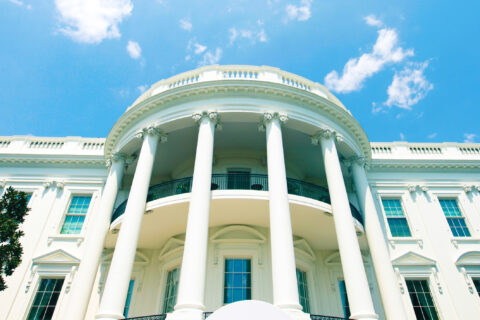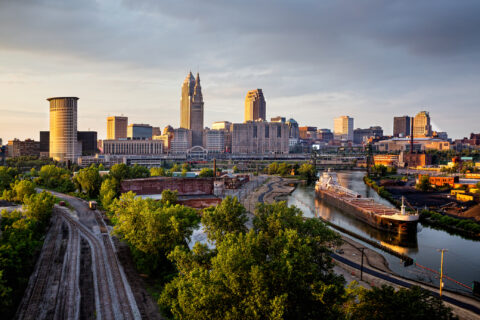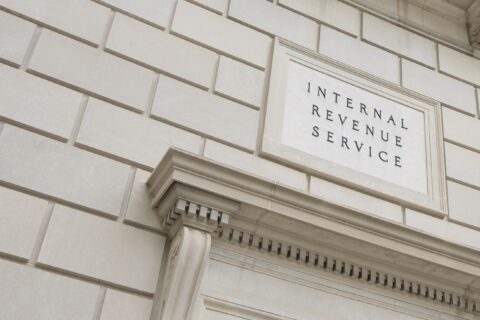The Inflation Reduction Act (IRA) continues to provide new opportunities for local leaders to advance clean energy projects in their communities.
These clean energy programs, grants and tax credits have been a target for repeal by some Members of Congress (PDF). However, cities, towns and villages can utilize them to deploy solar energy projects, purchase electric vehicles or install electric vehicle charging infrastructure, retrofit homes to reduce energy costs and more.
Two provisions in IRA for municipalities to access are the Elective Pay tax credits and the Greenhouse Gas Reduction Fund. These programs can support the work of cities, towns and villages in meeting their climate action goals and reducing energy costs for residents by bringing new financial support to critical projects.
As litigation on the Greenhouse Gas Reduction Fund continues and Congress scrutinizes clean energy programs as possible funding offsets for legislation to extend the 2017 tax package, projects are underway in communities.
Elective Pay
Elective Pay (also known as Direct Pay) allows local governments and other tax-exempt entities to claim tax credits for clean energy investments or production, which helps cities, towns and villages reduce carbon emissions.
A new Local Government Direct Pay Tracker showcases how federal tax credits are helping support clean energy projects in communities. Climate Mayors, C40 Cities, the Urban Sustainability Directors Network and Atlas Public Policy launched the tracker in May. It includes 121 projects across 63 local government jurisdictions (at time of publication) and is sortable by Congressional districts. The tracker is updated in real time, and local governments can submit their project information here.
While local governments are eligible for 12 tax credits (PDF), the data from the tracker shows that cities, towns and villages are taking advantage of some tax credits more than others — for example, the Investment Tax Credit for Energy Property (Section 48; pre-2025) and the Credit for Qualified Commercial Clean Vehicles (Section 45W) lead the way.
Here is a look at some of those projects from the Local Government Direct Pay Tracker:
Solar
- City of Lakewood, CO (pop. 155,984) – rooftop solar and parking canopy solar system at the Whitlock Recreation Center, which combined will offset 100% of the anticipated electricity use at the center.
- Town of Brighton, NY (pop. 37,137) – renovation of the town hall with geothermal HVAC and solar installation.
- City of Eloy, AZ (pop. 15,635) – install solar array at the city’s wastewater treatment plant.
- City of Vadnais Heights, MN (pop. 12,912) – install a solar PV system on the roof of its city hall.
Electric Vehicles and Charging Infrastructure
- City of La Crescent, MN (pop. 5,276) and Village of Somerset, WI (pop. 3,019) – purchase electric vehicles for the police fleet.
- Village of Nyack, NY (pop. 7,265) and Town of Boone, NC (pop. 19,092) – purchase electric vehicles for city operations.
- City of Bloomington, IN (pop. 79,168) and Dayton, OH (pop. 137,644) – purchase electric vehicles to electrify the municipal fleet.
- City of Chattanooga, TN (pop. 181,099) and City of Alexandria, VA (pop. 159,467) – install electric vehicle charging infrastructure on city property.
Clean/Alternative Fuels
- City of Lebanon, NH (pop. 14,282) – a Landfill Gas to Energy Project at the Lebanon Solid Waste Facility will convert the gas generated by waste into electricity that will be redistributed to the electrical grid and utilized by the city to power all city facilities.
NLC’s Local Infrastructure Hub supported cities, towns and villages with filing for the Elective Pay tax credits. Alexandria and Lebanon are two of the cities that participated in the Elective Pay bootcamp.
If your community filed for elective pay, email us at advocacy@nlc.org to let us know when you receive the reimbursement and the amount. Your input helps us protect Elective Pay and ensure cities, towns and villages have funding and financing streams for clean energy projects.
Greenhouse Gas Reduction Fund
Through the Greenhouse Gas Reduction Fund, nonprofit institutions act as intermediaries to provide financing, grants and technical assistance to communities undertaking clean energy projects.
One such nonprofit coalition is Power Forward Communities, focused on energy efficiency upgrades for single-family and multi-family homeowners and housing developers. In February, Power Forward Communities announced (PDF) the first round of investments in communities across the country.
Here is a look at a few of the projects in the pipeline pending legal challenges to the currently frozen funds:
City of Salem, MA (pop. 44,480)
The Fairweather Apartment (PDF) complex with 127 affordable, low-income units will undergo an energy retrofit with improvements to the roof and wall insulation, as well as HVAC systems for more efficient heating and cooling. Additionally, a rooftop solar array is planned to accompany the existing ground panels. The project will receive $7.6 million in financing and leverage $16.4 million in additional capital.
City of Kalamazoo, MI (pop. 73,598)
The Kalrecovery project (PDF) builds on a long-proven approach of connecting affordable housing and services to help at-risk populations regain their financial stability and health. The 48-unit development will be built on a former brownfields site and will be high-performance and energy-efficient to reduce utility costs for residents. The project secured several funding and financing streams, including $4 million in financing from Power Forward Communities.
City of Vancouver, WA (pop. 190,915)
The Smith Tower Apartments (PDF), which provides 170 affordable senior living housing units, will undergo its first major modernization and retrofit to improve energy efficiency and fire safety. Once complete, the new resilience features will protect the building and residents from extreme weather. The project will receive $11.5 million in financing and leverage $76.1 million in additional capital.
These are just a few examples of the unprecedented positive impact IRA programs have had on the residents of cities, towns and villages of all sizes across the country. Utilizing these opportunities creates new jobs in communities, will save taxpayers dollars on energy bills and improve air quality. NLC continues to advocate for preserving the clean energy programs and tax credits from the IRA.
Take Action
Local leaders, let your members of Congress know how your community has benefited from elective pay and other clean energy programs from the IRA.







